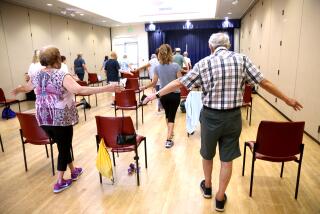No Easy Answers in Elderly Care
- Share via
Eighty-Five Plus: The Oldest Old by Sally Bould, Beverly Sanbourn and Laura Reif (Wadsworth Publishing Co.: $16; paper).
Indeed, as the authors state, “People who reach 90 are different.” Gerontologists, engaged in different areas of specialization, distinguish between the “young old” (67-74), “old old” (74-85) and “oldest old.”
People in the 85-plus group have achieved extreme longevity, which often proves a mixed blessing. Unlike several Scandinavian countries whose “oldest old” outnumber America’s, we lack a strong family network and an adequate medical delivery system.
Analyzing different ways the rich and poor are treated (there’s a passage about the Duchess of Windsor, who died at 89 in a nursing facility, contrasted with an ordinary woman on Medicaid), the authors say middle-class people frequently must “spend down” their assets, often becoming impoverished.
There are no easy answers, but there are sensible beginnings to the problem, say the authors, utilizing both private and governmental resources. In the meantime, those responsible for nonagenarians must manage their finances skillfully, make sure physical needs are met and provide dignified, compassionate care “as long as needed.”


